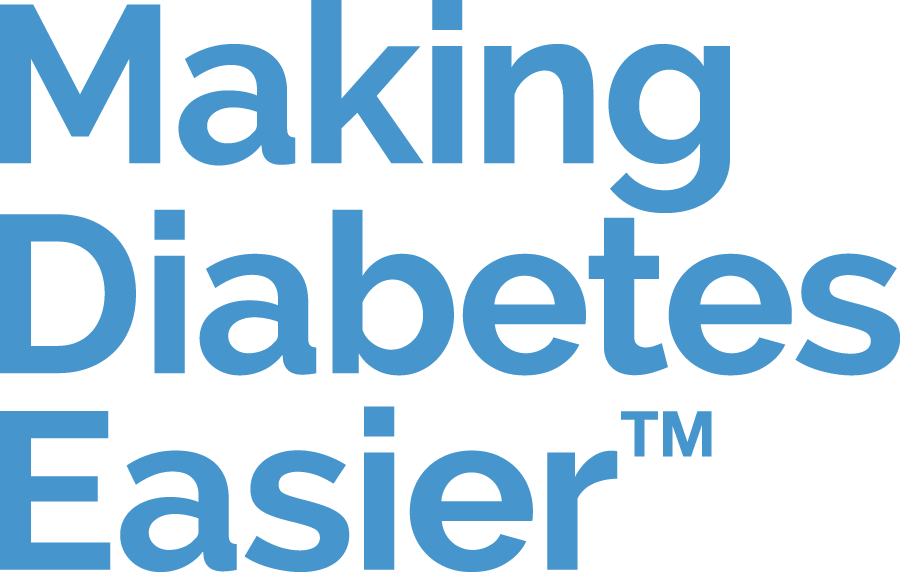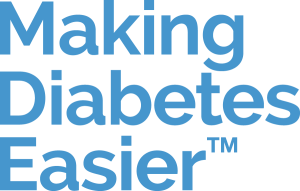What are the symptoms of type 1 diabetes?

What are the symptoms of type 1 diabetes?
Type 1 diabetes is an autoimmune condition where the body doesn’t produce enough insulin – a hormone that helps keep blood glucose levels in check.1,2
This guide covers the symptoms and causes of type 1 diabetes in adults and children and explains when to seek medical attention.
What are the symptoms of type 1 diabetes?
Type 1 diabetes can often go unnoticed, and for a while, you may have no symptoms at all.1
However, when the symptoms appear, they can come on suddenly and progress fairly quickly.3 It’s important that you see a healthcare professional as soon as you start experiencing symptoms.3 This is because the sooner you learn to manage your type 1 diabetes, the better your outlook and your chances of avoiding complications.4
We explain the most common symptoms of type 1 diabetes below.3
Feeling very hungry all the time
Insulin is responsible for turning the carbohydrates you get from food into energy that your cells use to function properly.2 When there isn’t enough insulin in the body, and your cells don’t get the energy they need, your brain tries to compensate by ‘telling’ you to eat more.3
Losing weight without wanting to
Because your cells can’t receive and use energy properly when you have diabetes, you may lose weight.3 Your body needs to get its energy from elsewhere, so it will break down fat instead, causing weight loss.3 You may also lose calories by peeing more often than usual.5
Peeing often
When blood glucose levels are too high, it ends up in your urine, drawing in water and increasing the volume of urine that you make.3,5 This leads to frequent urination, both during the day and at night.3,5
Feeling very thirsty
Peeing often causes you to lose a lot of fluids, which leads to increased thirst and dehydration, other common type 1 diabetes symptoms.3,5 The dehydration may also result in having a dry mouth and itchy skin.3
Blurred vision
Hyperglycaemia, or too much glucose in the blood, can lead to blurred vision or other vision problems.1,3 These symptoms occur because the glucose accumulates in the lens of the eye.3
Fatigue
Fatigue can be the result of your cells being unable to break down food into energy.1,3,5 Extreme fatigue can be a sign of diabetic ketoacidosis (DKA).3
Diabetic ketoacidosis and when to seek urgent care
When fat is metabolised (broken down and used for energy) in the body, it creates by-products called ketones.5
When there’s enough insulin in the body and things work properly, you don't need to rely on breaking down fat to make energy.3,5 But when there isn’t enough insulin – which also plays a key role in fat metabolism – ketones build up in the blood to dangerous levels.2,3,5 This causes a condition called diabetic ketoacidosis (DKA).3,5
Symptoms of diabetic ketoacidosis
DKA is a serious medical condition that requires urgent medical attention.3 If you experience any of the following DKA symptoms, seek care immediately:3
- Heavy breathing or hyperventilating – to make up for the dangerously high levels of ketones in your blood, the body hyperventilates, causing heavy or fast breathing, as it tries to get more oxygen in the blood.5
- Fruity-smelling breath – excessive ketones in the blood can cause your breath to have a fruit-like smell.3
- Confusion or loss of consciousness – when DKA is untreated, the body’s compensatory mechanisms (like hyperventilation) slowly fail.3,5 This may cause mental confusion, loss of consciousness and, if not treated further, coma and even death.3,5
DKA can also cause tummy pain, nausea and vomiting, as well as extreme fatigue or feeling exhausted.3
Type 1 diabetes symptoms in children

Parents, school staff and healthcare professionals all play a key role in a child’s diagnosis of type 1 diabetes.1 However, detecting type 1 diabetes in children is sometimes challenging.1,6 The first signs are subtle and may initially suggest other common childhood issues (for example, behavioural problems in class).1,6
The symptoms you should look out for in your child are very similar to those of diabetes in adults and may include:6
- Feeling very thirsty
- Being constantly hungry
- Peeing often during the day, at night or bedwetting
- Behavioural problems, including poor school performance
- Unexplained weight loss
- Lack of energy
- Blurred vision
More rarely, symptoms can include:6
- Impaired growth (when a child is smaller than expected for their age)
- A genital yeast infection that won’t go away
If you notice any of these symptoms in your child, it’s important that you see a healthcare professional as soon as you can.7
DKA signs and symptoms that require urgent medical attention include:3,6
- Fast breathing
- Tummy pain
- Nausea and vomiting
- Fruity breath
- Confusion or difficulty paying attention
Causes of type 1 diabetes
Type 1 diabetes is an autoimmune condition, which means the body’s own immune system wrongly attacks its cells.1
In the case of diabetes, the immune system attacks the cells responsible for creating insulin in the pancreas (called beta cells).1 Therefore, the body no longer has enough insulin to function properly.1
It’s not entirely clear what causes type 1 diabetes, but a combination of the following factors may play a role:1,6
- a genetic background (having a family history of diabetes)
- environmental triggers, like an infection with a virus, nutrition or the composition of bacteria in your gut (microbiome)
Understanding type 1 diabetes symptoms and causes
Type 1 diabetes is an autoimmune condition in which your body doesn’t produce enough insulin.1 While researchers don’t quite know what causes type 1 diabetes, a combination of genes and environmental factors is likely.1
Common symptoms include feeling thirsty and hungry, peeing more frequently, losing weight, not seeing clearly and feeling fatigued.1 Other signs and symptoms, like difficulty breathing, vomiting, tummy pain or a fruity-smelling breath, may signal a medical emergency.3
Receiving medical attention and a diagnosis as early as possible will greatly improve the outlook of people living with type 1 diabetes and reduce their risk of complications.4
Sources
- Magliano DJ, Boyko EJ. IDF Diabetes Atlas 10th edition scientific committee. IDF DIABETES ATLAS [Internet]. 10th edition. Brussels: International Diabetes Federation; 2021. Chapter 1, What is diabetes? Available from: https://www.ncbi.nlm.nih.gov/books/NBK581938/
- Insulin response. Science Direct. Accessed: 18 July 2024. Available at: https://www.sciencedirect.com/topics/medicine-and-dentistry/insulin-response
- Breakthrough T1D (formerly JDRF). Symptoms of type 1 diabetes. Accessed: 18 July 2024. Available at: https://www.breakthrought1d.org/t1d-basics/symptoms/
- Holt RIG, DeVries JH, Hess-Fischl A, et al. The management of type 1 diabetes in adults. A consensus report by the American Diabetes Association (ADA) and the European Association for the Study of Diabetes (EASD) [published correction appears in Diabetologia. 2022;65(1):255. doi: 10.1007/s00125-021-05600-6]. Diabetologia. 2021;64(12):2609–52. https://doi.org/10.1007/s00125-021-05568-3
- Kahanovitz L, Sluss PM, Russell SJ. Type 1 Diabetes - A clinical perspective. Point Care. 2017;16(1):37–40. https://doi.org/10.1097/POC.0000000000000125
- Libman I, Haynes A, Lyons S, et al. ISPAD Clinical Practice Consensus Guidelines 2022: Definition, epidemiology, and classification of diabetes in children and adolescents. Pediatr Diabetes. 2022;23(8):1160–74. https://doi.org/10.1111/pedi.13454
- JDRF. Signs and symptoms of type 1 diabetes. Accessed: 18 July 2024. Available at: https://jdrf.org.uk/knowledge-support/about-type-1-diabetes/signs-and-symptoms-of-type-1-diabetes/





